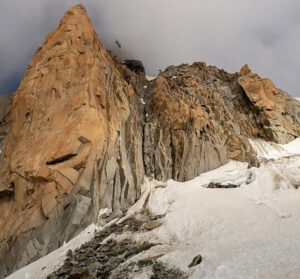What could take down a prehistoric ape the size of a pickup truck? Don’t look at a rugby player, pro wrestler, or even any natural predator.
Just check the weather.
Gigantopithecus blacki was the largest primate that ever lived. “Giganto” stood three meters tall and weighed about three to four times as much as a human at 200-300 kilograms. The ape lived in southeast Asia about two million years ago — until it sharply declined and disappeared.
Giganto’s downfall began about 300,000 years ago, but until now no one could suggest a compelling reason for it. Now, new research points to climate change. It forced dietary adjustments that the huge creatures couldn’t adjust to.
A team led by Kira Westaway of Macquarie University published the recent work in the prestigious journal Nature. Right away, the team’s findings chipped away at a common misconception about Giganto’s extinction.
“It was assumed that the deterioration in forests was the cause of its demise as it couldn’t live in open grasslands,” Westaway told the Guardian. “But our study shows that this [shift to savannah] occurred at about 200,000 [years ago] when G. blacki was already extinct.”
Favorite fruits disappeared
Instead, Westaway’s group found that a gentler shift in Giganto’s habitat from deep forests to medium-density savannah triggered the die-off. Climate change seemed to account for the novel landscape.
“We’re getting a very strong wet season and a very strong dry season,” said Westaway.
The upshot: Fruits on which Giganto had grazed freely throughout the year suddenly became scarce during dry periods.
The team investigated the evolving diet of Giganto by examining wear patterns on its teeth and its internal chemical composition. Fallback foods were the focus. What did Giganto eat as its staple foods disappeared?
For comparison, the team looked at teeth from a Chinese orangutan, a similar animal that went extinct later. While the orangutan shifted to leaves and flowers from the forest canopy, the giant ape opted for a paltry backup diet: bark and twigs on the forest floor.
Mobility limited the animal’s foraging range, the team found. Soon, Giganto populations faced challenges, and between 295,000 and 215,000 years ago, they had disappeared.






